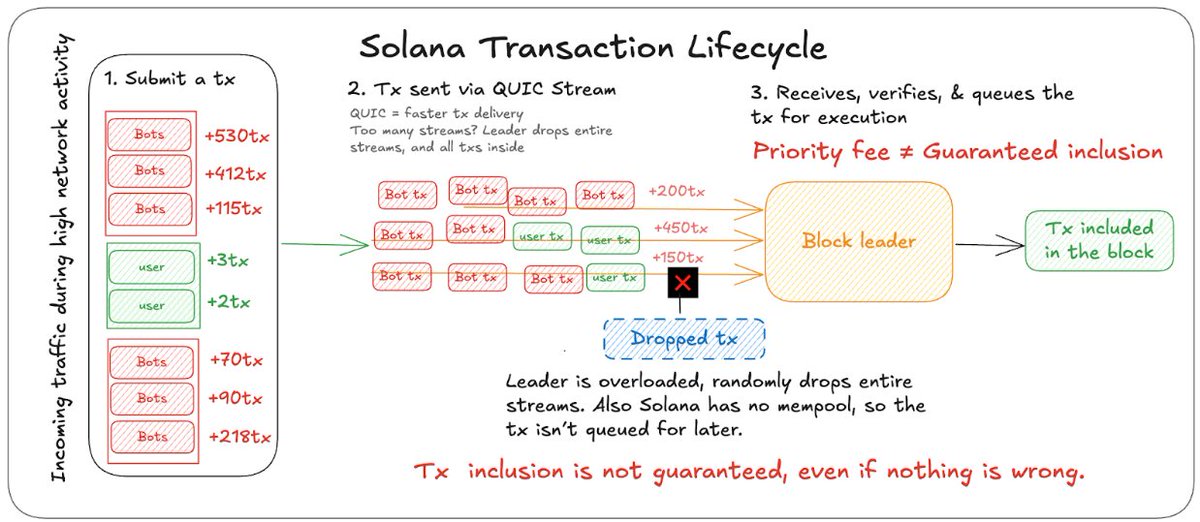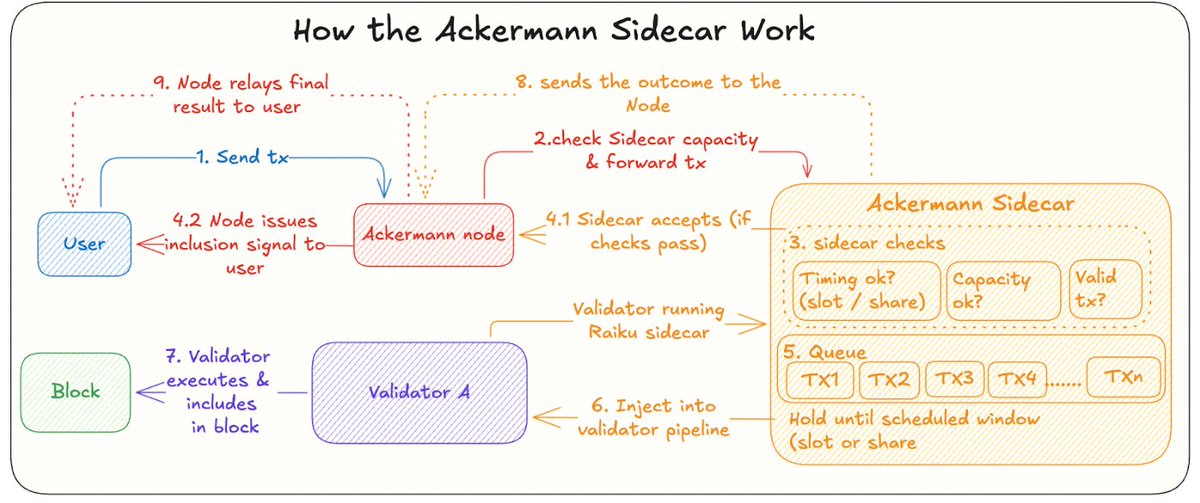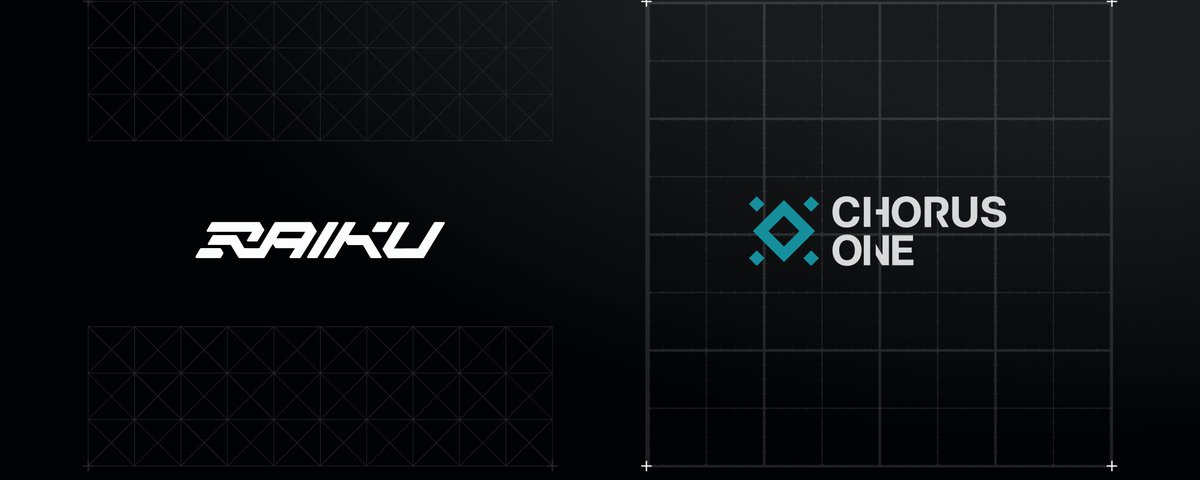Raiku's Ackermann Sidecar
The Ackermann Sidecar is an add-on that runs next to a normal Solana validator, providing them with more control over how transactions are handled.

Validators are the backbone that keeps Solana running. They produce blocks, secure consensus, and decide which transactions land on-chain. In Solana’s early years, most validator income came from inflation rewards (newly issued SOL). But inflation is set to decline over time, which means validators must increasingly rely on transaction fees and new blockspace markets to remain profitable.
Jito (an alternative validator client) was the first innovation in validator economics.
- It introduced block auctions, reserving about 10% of each block (5–6 million compute units, or CUs) for “bundles.”
- Bundles are transaction packages submitted by professional traders called searchers who are competing for maximal extractable value (MEV) opportunities, such as liquidations on DEXs.
- Searchers pay validators for guaranteed inclusion of these bundles.
Impact: That 10% slice alone has historically generated up to 3× normal block rewards. In other words, structured markets made a small part of the block more valuable than the rest of it combined.
The Limits of MEV-Only Revenue
Jito proved that structured blockspace could raise validator earnings, but only in a narrow way. Most of the revenue comes from MEV searchers, not from everyday developers. This income is also extractive; a searcher’s profit is often the everyday user’s loss. Over time, this dynamic makes validators dependent on a small group of specialized actors instead of broad demand across the ecosystem.
Meanwhile, the wider network continues to face challenges:
- Congestion forces apps and users to submit repeated retries just to get included.
-Bot traffic inflates Solana’s activity metrics; a single bot submitted nearly 11 million transactions in 30 days with a 99.95% failure rate. On September 1, 2025, only 155 of 658,460 recorded transactions succeeded (≈0.024%).
- Since low-fee bot transactions are still counted even when they fail, reported throughput often looks higher than meaningful activity.
- Solana’s transport layer, Quick UDP Internet Connections (QUIC), often throttles or drops transactions under heavy load, meaning many never reach the block leader at all.
- Fees remain unpredictable and paying more does not guarantee inclusion.
- Current validator clients offer little visibility or control over how bandwidth is allocated, leaving both operators and developers without tools to manage network traffic effectively.
Together, these issues reduce predictability for users and increase costs for developers.

The Gap and the Opportunity
The lesson from Jito is clear: market design changes validator economics. But instead of limiting structured blockspace to 10% and relying only on MEV activity, the bigger opportunity is to open up all blockspace (100%) to structured markets and make it useful for every application.
This is the vision behind Raiku:
- Slot auctions allow applications to reserve blockspace ahead of time.
- Premium lanes allow developers to pay for guaranteed inclusion in a specific slot.
- Extensions introduce new app-level features (for example, cross-chain accounts or custom execution environments) which validators can monetize.
Together, these tools enable non-MEV revenue streams for validators and provide developers with predictable execution surfaces. But for these promises to mean anything, they need to be enforced by the validators who are producing blocks. That missing enforcement layer is the role of the Ackermann Sidecar.
What is the Ackermann Sidecar?
The Ackermann Sidecar is an add-on that runs next to a normal Solana validator. It does not replace the validator software (Agave or Firedancer). Instead, it works alongside them as an additional helper module.
The sidecar’s job is to provide validators with more control over how transactions are handled. Currently, most validators simply accept whichever transactions reach them in time. With the Raiku sidecar, validators can:
- Decide how traffic enters.
- Guarantee that certain transactions will land in a specific slot.
- Filter out spam transactions before they reach the leader.
- Route transactions more efficiently by looking ahead at which validator will produce the next block.
To put it in simple terms:
- Raiku is a co-pilot: the validator keeps flying the plane (producing blocks) while the sidecar helps with navigation and traffic control.
- Raiku is a turbocharger: it boosts the validator’s performance without replacing the engine.
The validator sidecar is what turns Raiku’s ideas into reality. It empowers validators to earn more, and it provides developers and users the predictability and reliability that today's Solana clients can’t offer on their own.
With this high-level picture in mind, here’s how the Sidecar supercharges everyday transaction handling.

Raiku is engineered with two parts that always work together:
- Ackermann Node is the planner. It runs auctions, records which applications have paid for blockspace, and determines how slots are allocated.
- Ackermann Sidecar is the enforcer. It runs alongside the validator software and ensures those commitments are always honored.
In short: the Node makes the plan, the Sidecar carries it out.
Here’s what the sidecar actually does:
1. Transaction Routing & Guaranteed Delivery
The Sidecar’s first job is to accept or reject incoming transactions from the Node. It checks whether the transaction matches the type of booking:
- For slot-inclusion quality of service (siQoS) transactions, the Sidecar confirms that this validator really is the leader for the requested slot. For example, if Alice books slot #210 to settle a DEX swap, the Sidecar will only admit her transaction if this validator is indeed the slot #210 leader; otherwise, it will decline the transaction and the Node will reroute Alice's booking to the correct slot.
- For stake-weighted quality of service (swQoS) transactions, the Sidecar checks that the validator still has room inside its proportional share of bandwidth. For instance, if a validator holds 5% of total stake, its Sidecar will only admit about 5% of the overall transaction flow, and Alice’s swap will only be accepted if space remains in that 5% share.
In both cases, the Sidecar will ensure that the transaction itself is valid. If all checks pass, the transaction is accepted; if not, it will be declined instantly so the Node can reroute it.
2. Scheduling & Injection
Accepted transactions are not fired blindly into the validator. Instead, the Sidecar queues them for just a short time before injecting them at the exact right moment. For siQoS, that means the reserved slot Alice paid for. For swQoS, it means her transaction is submitted as part of the validator’s fair share of bandwidth.
This precise timing solves one of Solana’s biggest problems: QUIC networking drops. Often, many transactions never even reach the leader because the network is overwhelmed. With the Sidecar, once a transaction is admitted, it is held locally and delivered reliably into the validator’s pipeline without ever getting lost due to QUIC throttling.
3. Spam Filtering & Fairness
Solana is constantly hammered by bot spam, consisting of millions of duplicate transactions that clog the network. The Sidecar filters these spam transactions before they ever reach the validator, keeping bandwidth open for genuine traffic. It can also enforce simple ordering rules which reduce harmful MEV behavior such as sandwich attacks. This approach keeps access to blockspace more fair: Alice’s single, valid swap request won’t get drowned out by thousands of bot duplicates.
4. Load Balancing & Leader Awareness
The Sidecar always knows who the current and upcoming leaders are on Solana’s schedule. It forwards transactions only to the correct leader, making sure they land where they belong. If the chosen Sidecar is congested, Raiku will reroute the transaction to another Sidecar that can still honor the promise, avoiding the risk of being dropped.
Example: If Validator A is the slot leader but its Sidecar is overloaded, Raiku can reroute Alice’s swap to Validator B’s Sidecar for the next slot without breaking her guarantee.
5. Reporting & Fallback
After execution, the Sidecar observes the result and reports back to the Node. The Node then relays the outcome to the user, whether success or failure. Importantly, if no Sidecar is present for a given validator or slot, transactions don’t disappear. They automatically fall back to Solana’s normal RPC path. This makes using Raiku safe regardless of adoption level: Sidecars improve reliability when they are available and never hinder the network when they aren’t.
These mechanics directly shape validator revenue by turning blockspace into inventory that can be sold with guarantees.
Validator Economics
Jito showed that structuring even a slice of blockspace could boost validator earnings. But that model is narrow and offers value primarily to MEV searchers.
Raiku improves the idea further: instead of limiting structured markets to 10%, it opens up all blockspace (100%) and opens up this value to every developer and their users. With the Ackermann-sidecar enforcing commitments at the validator level, every slot, premium lane, and extension becomes an enforceable contract, turning blockspace into a full marketplace.
Here’s how that changes validator economics:
Slot Marketplace
Slots are the basic time windows in which validators produce blocks. Raiku turns them into tradable assets.
- Primary market: Validators sell their upcoming slots in advance, with larger staked validators able to sell more.
- Secondary market: Unused slots can be resold dynamically so nothing goes to waste.
- Revenue effect: Validators profit twice, once from the initial reservation, and again from resales, much like airlines selling and re-selling seats.
Priority & Premium Services
Applications often need certainty, not just speed. The sidecar enforces premium services where developers can purchase:
- Guaranteed inclusion in a specific slot.
- Pre-confirmations (advance notice that a transaction will land).
- Protection from harmful MEV tactics like sandwich attacks..
- Extensions → new app-level features (e.g., global accounts or custom execution environments) that validators can monetize.
Incentive Alignment & Flywheel
Raiku’s economics are positive-sum:
- Validators earn more from diverse, predictable markets.
- Applications get reliable inclusion and MEV protection.
- Users see fewer dropped or manipulated transactions.
- Revenue effect: Validators earn structured, app-driven fees that are steadier and more predictable than chaotic fee bidding
This alignment creates a flywheel: more applications → more validator revenue → more reliable network → even more demand for Raiku slots and extensions.
Partnerships, Token, and Roadmap
Validator adoption is critical. Raiku already has commitments from major operators like Kiln, Figment, Chorus One, Everstake, Blockdaemon, Triton, and Luganodes, collectively covering more than 26% of Solana’s stake weight. Beyond validators, Raiku is working with ecosystem projects such as Wormhole, Metaplex, Zama, Arcium, SendAI, and Jupiter.
A Raiku token will also be introduced to capture these new revenue streams. We have been carefully designing our system for validator economic rewards to align with our H1 2026 mainnet launch. Validators will then earn in a blended way:
- SOL rewards (anchoring them to base-chain security).
- Raiku tokens (aligning them with the growth of Raiku’s extension ecosystem).
Conclusion
Validator economics on Solana are changing. Inflation rewards are shrinking, and MEV-driven income is narrow and extractive. Raiku's Ackermann Sidecar expands the validator business model into a portfolio of sustainable markets, slots, premium services, extensions, financial flows, and infrastructure. The result is increased stability in revenue for validators and a massively expanded design space for developers, who gain predictable execution and new capabilities.
As Solana scales, the validator-side innovation Raiku provides will not only re-shape decentralized network economics, it will also provide a massive increase in the variety of applications the network can support.

.png)

